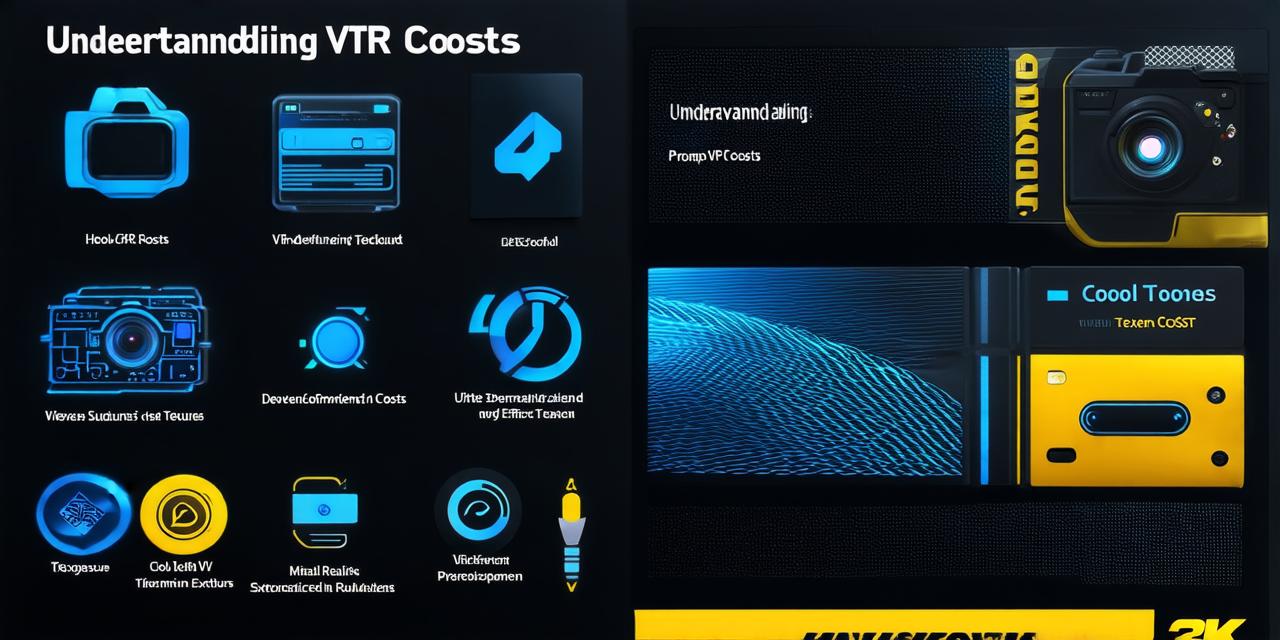1. Hardware Costs:
The first factor to consider when developing a VR application is the hardware cost. VR hardware can be expensive, with prices ranging from a few hundred dollars to tens of thousands of dollars. The type of hardware you need depends on the complexity of your application. For example, if you are developing a VR game that requires high-performance graphics and fast movement tracking, you will need more powerful hardware such as a high-end gaming computer or a specialized VR development kit. On the other hand, if you are creating a simple educational program, you may be able to get by with lower-end equipment.
2. Software Development Costs:
Developing software for VR can be expensive, especially if you need custom code. VR applications require advanced programming skills and knowledge of specialized libraries and tools. The cost of software development will depend on the complexity of your application, the experience of your development team, and the availability of pre-built solutions. You may also need to invest in specialized development tools such as game engines or VR development kits.
3. Content Creation Costs:
Creating high-quality content for VR can be expensive and time-consuming. This includes designing 3D models, creating animations, and developing interactive elements. You may also need to hire professional voice actors and sound designers to enhance your application’s immersive experience. Additionally, you may need to invest in specialized software such as motion capture systems or 3D scanners to create realistic characters and environments.
4. Testing and Quality Assurance Costs:
Testing and quality assurance are essential for ensuring that your VR application is bug-free and performs well. This includes testing on multiple platforms, identifying and fixing compatibility issues, and ensuring that your application meets user expectations. You may need to hire a dedicated QA team or use automated testing tools to ensure the quality of your product.
5. Marketing and Distribution Costs:
Marketing and distribution are crucial for reaching your target audience and generating revenue from your VR application. This includes developing a marketing plan, creating promotional materials, and distributing your application through various channels such as app stores or online marketplaces. You may also need to invest in advertising campaigns to generate buzz around your product. Additionally, you may need to consider the cost of licensing or renting VR hardware for events or demonstrations.
6. Licensing and Permissions Costs:
Licensing and permissions costs can vary depending on the technology and platforms you use. For example, if you are using proprietary software or hardware, you may need to pay licensing fees. You may also need to obtain permits or approvals from regulatory bodies to ensure that your application complies with relevant laws and regulations. Additionally, you may need to consider the cost of copyright and trademark protection for your content.
7. Legal and Contractual Costs:
Developing a VR application can involve complex legal and contractual issues such as intellectual property, liability, and data privacy. You may need to hire a lawyer or consult with legal experts to ensure that you are in compliance with all applicable laws and regulations. Additionally, you may need to consider the cost of insurance coverage for your business and any potential legal disputes that may arise.
To optimize your development budget, it is important to carefully consider each of these factors and make informed decisions based on your project’s requirements. For example, if you are developing a simple educational program, you may be able to get by with lower-end equipment and software, which can reduce your hardware and software development costs. Additionally, you may be able to create some content in-house or use pre-built solutions to reduce your content creation costs.
It is also important to consider the potential long-term benefits of your VR application when making budgeting decisions. For example, if your application has the potential to generate significant revenue and attract a large user base, investing in high-quality hardware and software may be worth the initial cost. Additionally, taking the time to develop a robust marketing strategy and secure necessary licenses and permits can help ensure the success of your application in the long run.
In conclusion, developing a VR application can be a complex and costly process. However, by carefully considering each of the factors that affect development costs and making informed decisions based on your project’s requirements, you can optimize your budget and increase the likelihood of success for your VR application.
